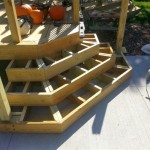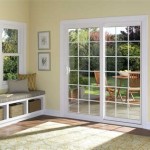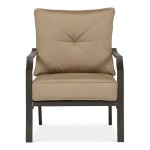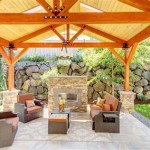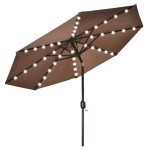Accordion Patio Doors: Enhancing Spaces with Flexibility and Light
Accordion patio doors, also frequently referred to as bi-fold doors, represent a significant advancement in architectural design, offering homeowners and building managers unparalleled flexibility in space management and aesthetic appeal. These doors are characterized by their ability to fold back on themselves in a concertina-like fashion, creating a wide opening that seamlessly connects indoor and outdoor environments. This article will delve into the key features, benefits, considerations, and applications of accordion patio doors, providing a comprehensive overview for those considering their installation.
Space Optimization and Design Versatility
One of the primary advantages of accordion patio doors lies in their space-saving design. Unlike traditional sliding doors, which require a fixed panel that always occupies a portion of the doorway, accordion doors stack neatly to one side (or both sides, depending on the configuration) when fully opened. This characteristic maximizes the available opening, creating a significantly larger and more inviting transition between interior and exterior spaces. The removal of a visual barrier enhances the feeling of spaciousness and allows for unobstructed views of the surrounding landscape.
Furthermore, accordion doors offer considerable design versatility. They are available in a wide array of materials, including aluminum, wood, vinyl, and composite materials. Each material offers unique aesthetic and performance characteristics. Aluminum frames are often favored for their strength, durability, and resistance to corrosion, making them well-suited for coastal environments. Wood frames provide a warmer, more traditional look and offer excellent insulation properties, while vinyl frames are a cost-effective and low-maintenance option. Composite materials combine the benefits of multiple materials, offering a balance of strength, insulation, and aesthetic appeal.
The configuration of accordion doors can also be customized to suit specific architectural requirements and design preferences. Doors can be designed to fold to the left, right, or both sides, and the number of panels can be adjusted to accommodate varying opening widths. Some systems even allow for a swing door within the folded panels, providing convenient access without requiring the entire system to be opened. This flexibility ensures that accordion doors can be seamlessly integrated into a wide range of architectural styles, from contemporary to traditional.
The aesthetic impact of accordion doors extends beyond their material and configuration. The large glass panels allow for ample natural light to flood the interior space, creating a brighter and more inviting atmosphere. This increased natural light can also contribute to energy savings by reducing the need for artificial lighting during the day. The seamless connection between indoor and outdoor spaces also promotes a sense of well-being and enhances the overall living experience.
Beyond residential applications, accordion doors are increasingly being used in commercial settings, such as restaurants, cafes, and retail spaces. In these environments, they can create a dynamic and inviting atmosphere, blurring the lines between interior and exterior and maximizing the use of available space. During favorable weather conditions, the doors can be fully opened to create an open-air environment, attracting customers and enhancing the overall ambiance of the establishment. During inclement weather, the doors can be closed to provide protection from the elements while still allowing for ample natural light and views.
Energy Efficiency and Performance Considerations
While accordion doors offer significant aesthetic and functional benefits, it is crucial to consider their energy efficiency and performance characteristics. Large expanses of glass can be a significant source of heat gain or loss, depending on the climate and the quality of the glazing. Therefore, it is essential to select doors with high-performance glazing options, such as low-E coatings, insulated glass units (IGUs), and gas fills. Low-E coatings reduce the amount of ultraviolet and infrared light that passes through the glass, minimizing heat gain in the summer and heat loss in the winter. IGUs consist of two or more panes of glass separated by an air or gas-filled space, which provides additional insulation. Gas fills, such as argon or krypton, further enhance the insulating properties of the IGUs.
The framing material also plays a crucial role in the energy efficiency of accordion doors. Wood frames generally offer superior insulation compared to aluminum frames, but they require more maintenance to prevent rot and decay. Aluminum frames can be thermally broken to improve their insulation performance. A thermal break is a non-conductive material that is inserted between the interior and exterior sections of the frame, reducing the transfer of heat or cold. Vinyl frames offer good insulation properties and are relatively low-maintenance, but they may not be as strong or durable as wood or aluminum frames.
In addition to energy efficiency, it is important to consider the weather resistance and security features of accordion doors. The doors should be designed to withstand the prevailing weather conditions in the area, including wind, rain, and snow. Proper sealing and weatherstripping are essential to prevent drafts and water infiltration. The locking mechanisms should be robust and reliable to provide adequate security against forced entry. Multipoint locking systems, which engage the door frame at multiple points, offer enhanced security compared to single-point locking systems.
The installation of accordion doors should be performed by experienced professionals to ensure proper operation and performance. Improper installation can lead to a variety of problems, including air and water leaks, difficulty in opening and closing the doors, and premature wear and tear. A qualified installer will ensure that the doors are properly aligned and sealed, and that all hardware is functioning correctly. Regular maintenance, such as cleaning the tracks and lubricating the hinges, will help to prolong the life of the doors and ensure their continued performance.
When selecting accordion doors, it is important to consider the overall cost, including the cost of the doors themselves, the cost of installation, and the potential energy savings. While accordion doors may be more expensive than traditional sliding doors, the benefits they offer in terms of space optimization, design versatility, and enhanced living experience can justify the investment. Furthermore, the energy savings resulting from improved insulation and increased natural light can help to offset the initial cost over time.
Installation Process and Maintenance Requirements
The installation of accordion patio doors is a complex process that demands precision and expertise. It is critical to engage a professional installer who possesses a thorough understanding of the door's mechanics and the specific requirements of the installation site. The process typically begins with a detailed assessment of the opening, ensuring that it is square, level, and properly prepared to receive the door frame.
The frame is then carefully installed, ensuring that it is securely anchored to the surrounding structure. This step is crucial for the long-term stability and performance of the door system. Once the frame is in place, the individual door panels are installed and adjusted to ensure smooth and effortless operation. The hinges, rollers, and locking mechanisms are meticulously aligned and lubricated to guarantee optimal functionality. Weatherstripping is carefully applied to create a tight seal against air and water infiltration.
Following installation, regular maintenance is essential to preserve the beauty and functionality of accordion patio doors. This includes periodic cleaning of the glass panels to maintain unobstructed views and prevent the build-up of dirt and grime. The tracks should be kept free of debris to ensure smooth rolling of the door panels. Lubricating the hinges and rollers with a silicone-based lubricant will help to prevent squeaking and ensure smooth operation. Inspecting the weatherstripping for signs of wear and tear and replacing it as needed will help to maintain a tight seal against the elements.
The frequency of maintenance will depend on the climate and the level of usage. In coastal environments, where salt spray can accelerate corrosion, more frequent cleaning and lubrication may be necessary. Similarly, doors that are frequently opened and closed may require more frequent lubrication of the hinges and rollers. By following a regular maintenance schedule, homeowners can ensure that their accordion patio doors continue to provide years of reliable performance and enjoyment.
In conclusion, accordion patio doors offer a compelling combination of aesthetic appeal, functional flexibility, and energy efficiency. By carefully considering the material options, configuration options, energy performance, and installation requirements, homeowners and building managers can make informed decisions and select the perfect accordion patio doors to enhance their spaces and create seamless transitions between indoor and outdoor environments. While requiring professional installation and regular maintenance, the benefits derived from these doors often outweigh the initial costs, providing long-term value and enhancing the overall living experience.

The Benefits Of Installing Folding Patio Doors Truitt White

Home Page The Folding Door

Transforming Small Spaces With Bi Folding Doors Fieldstone Windows

Bi Folding Patio Sliding Door 3 Panel Fold

Replacement Bifold Patio Doors Local Pella Branch

Lincoln Windows Folding Patio Doors Mobile

Benefits Of A Folding Glass Door Pella

78 Best Ideas About Folding Patio Doors On Accordion Glass

4 Reasons Your Backyard Needs A Bifold Patio Door System

Bi Fold Patio Doors Custom Made Order Wintorium
Related Posts

